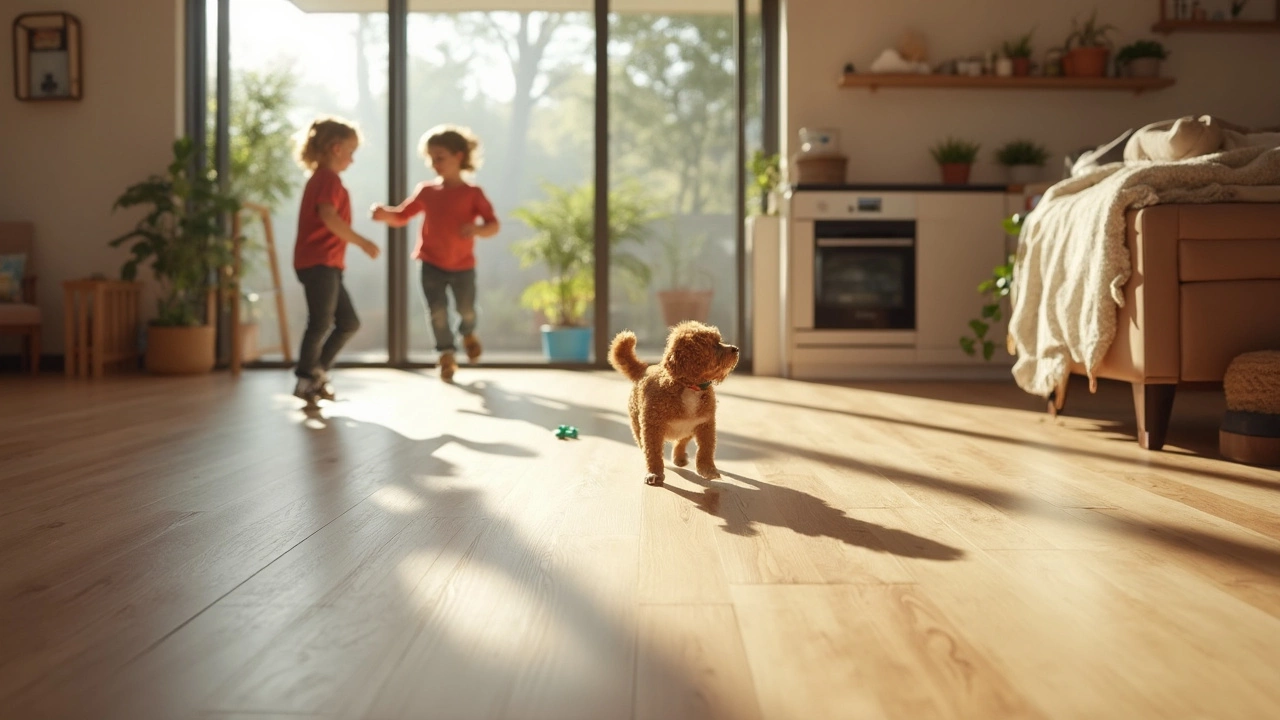Durable Floors: How to Pick a Floor That Stands the Test of Time
Ever had a floor that looked great when it was installed, then started showing scratches, dents, or stains after a few months? You’re not alone. A lot of homeowners and businesses choose a floor for its looks, forget about durability, and end up paying for a redo. The good news is you can avoid that mess. With a few simple guidelines, you can pick a floor that stays beautiful even after heavy traffic, pets, and spills.
What Makes a Floor Durable?
Durability isn’t magic; it’s a mix of material strength, surface finish, and how the floor handles everyday wear. Here are the three things to look for:
- Material hardness. Harder materials like engineered hardwood or porcelain tile resist dents better than softer options such as carpet or laminate.
- Finish quality. A high‑grade sealant or wear‑layer acts like armor. It protects against scratches, moisture, and UV fading.
- Impact resistance. Floors that can soak up drops, chair legs, or pet claws without cracking are key for busy homes.
When you combine these factors, you get a floor that keeps its shape and color for years. Ask yourself how much traffic the room gets, whether it’s a wet area, and if you’ll have heavy furniture moved around a lot. Your answers will steer you to the right material.
Top Durable Flooring Options
Below are the most resilient choices on the market right now. Each one scores high on wear resistance, water tolerance, and maintenance ease.
1. Luxury Vinyl Plank (LVP) – LVP looks like wood but is actually a thick, waterproof sheet. It handles spills, scratches, and pet accidents with little fuss. The click‑lock system makes DIY installs quick, and the wear layer can be as thick as 20 mil, which means years of use without a noticeable dent.
2. Porcelain Tile – Porcelain is fired at extremely high temperatures, giving it a dense, non‑porous surface. It’s perfect for kitchens, bathrooms, and high‑traffic hallways. Even heavy furniture won’t leave permanent marks, and a simple mop keeps it shining.
3. Engineered Hardwood – This type of wood has a real hardwood veneer over a layered core, making it more stable than solid wood. It resists expansion in humid rooms, and a scratch‑resistant finish helps hide dents from pets or moving chairs.
4. Commercial‑Grade Laminate – Modern laminate features a tough melamine coating that mimics wood or stone. It’s budget‑friendly and can stand up to the wear of busy families. Just avoid installing it where water sits for long periods.
5. Rubber Flooring – Often used in gyms or playrooms, rubber is soft enough to cushion falls but tough enough to survive heavy equipment. It’s also slip‑resistant and easy to clean.
Pick the option that matches your style and budget, then add a high‑quality sealant if the product doesn’t come pre‑finished. That extra step can add years to your floor’s life.
Finally, keep up with regular maintenance. Sweep or vacuum daily, mop with a pH‑balanced cleaner, and replace any worn seals every few years. A little care now saves you a lot of money and hassle later.
Ready to choose a floor that won’t quit on you? With these tips, you’ll pick a durable surface that looks great and handles whatever life throws at it.
Best Flooring That Doesn't Scratch: Real-Life Solutions
- Gavin Whitaker
- |
- |
- 0
Looking for flooring that stands up to scratches? Let's break down the real options that work in busy homes, especially if you’ve got kids, pets, or just hate seeing marks on your floors. We’ll compare different materials, spotlight which ones really hold up, and share some quick tricks to keep your floors looking sharp. No fluff—just what works and what doesn't. If you’re tired of constant repairs or nagging over shoes indoors, this guide’s for you.
View more